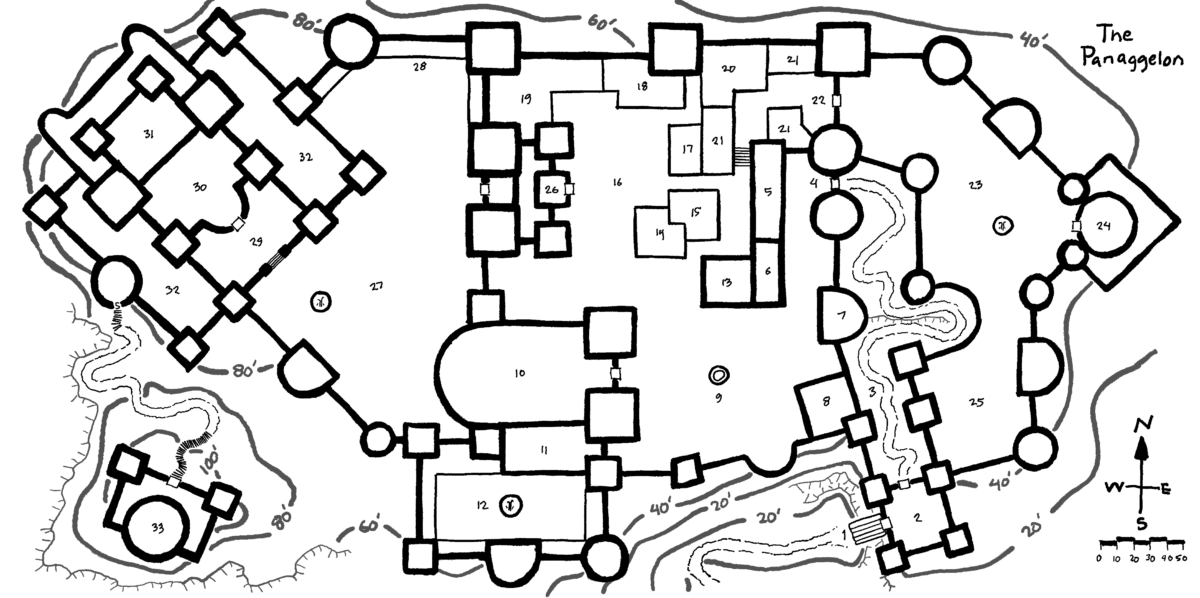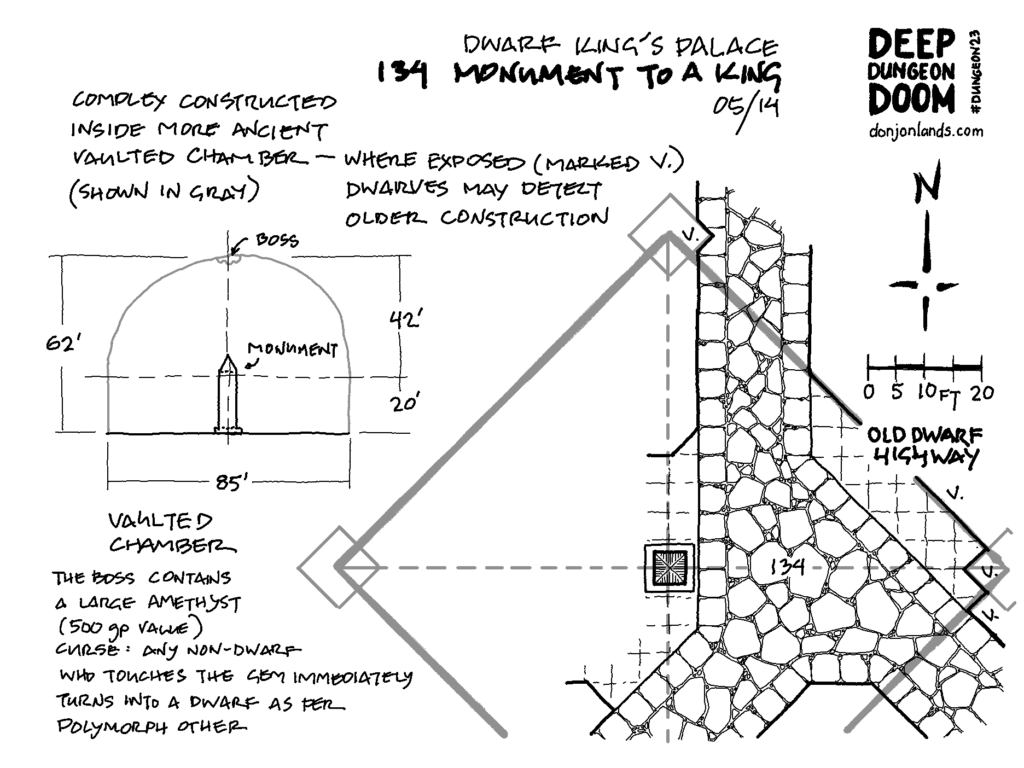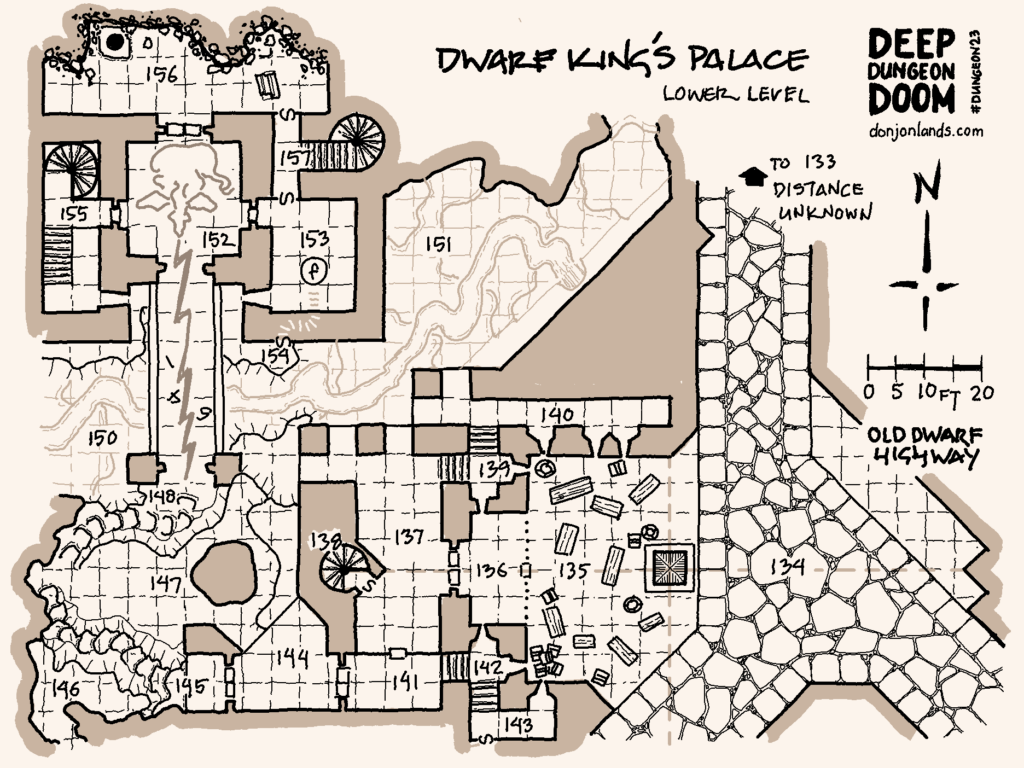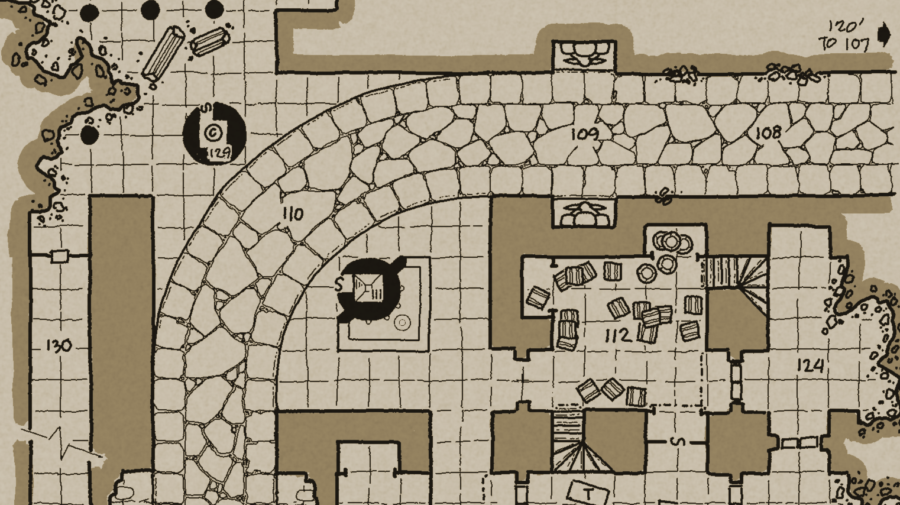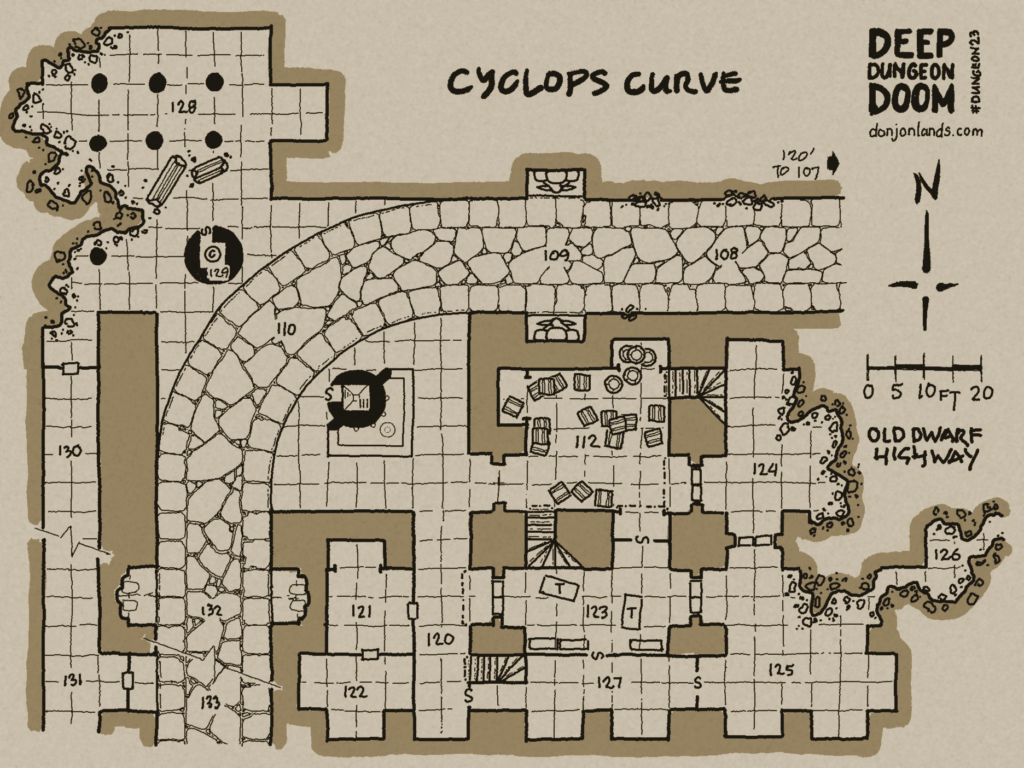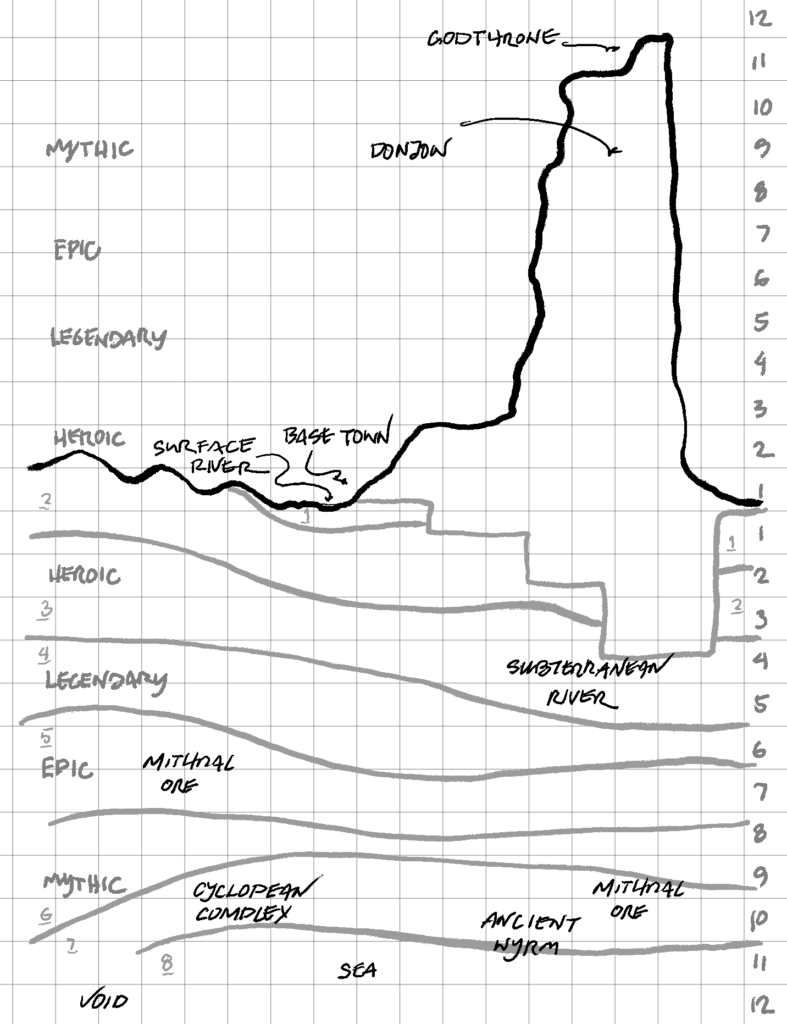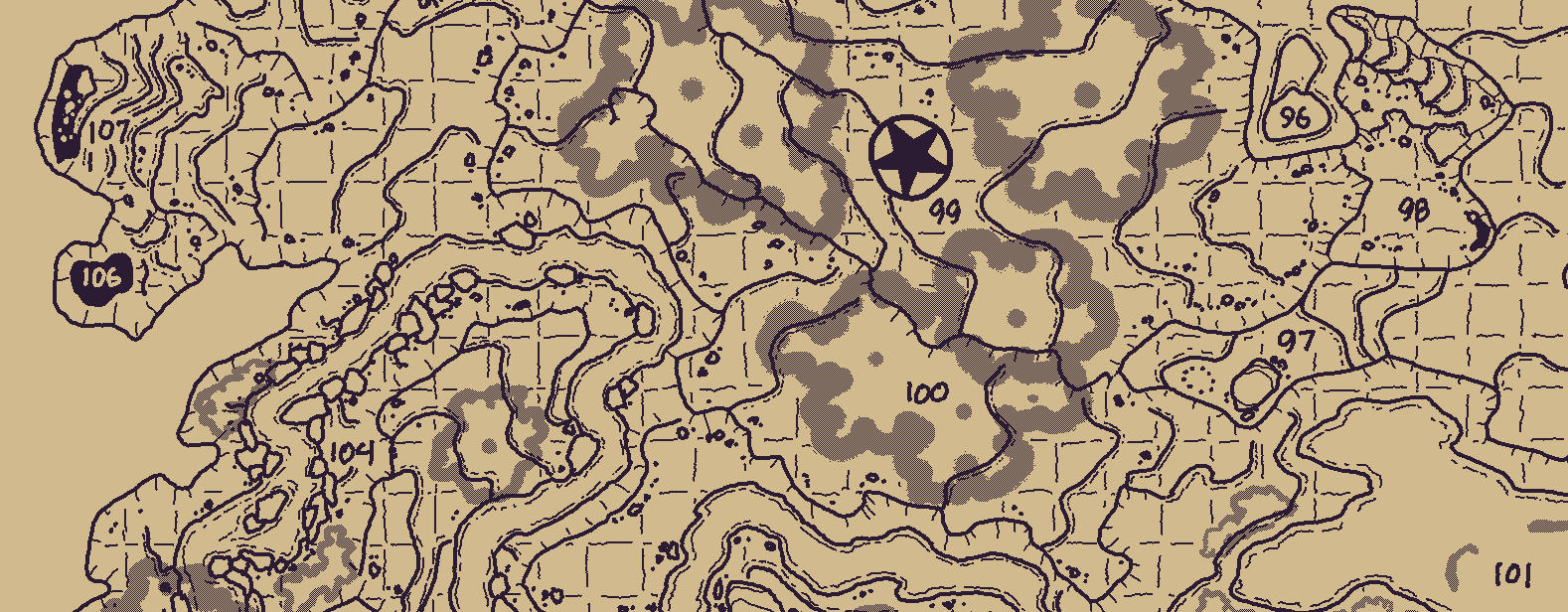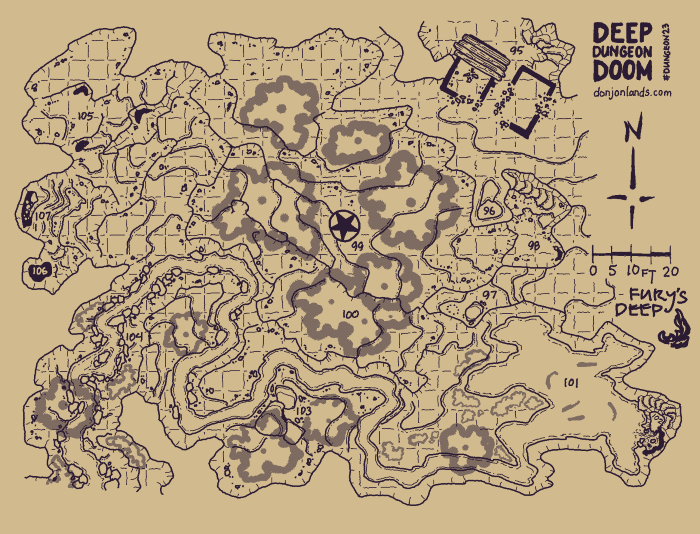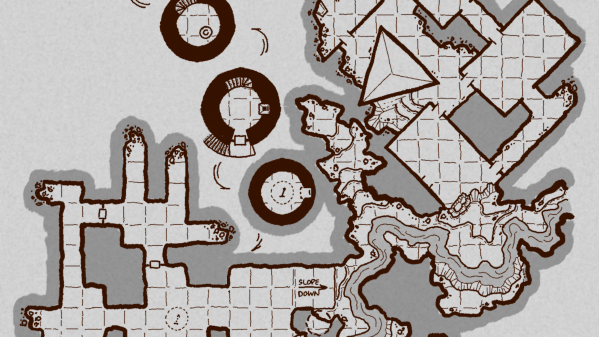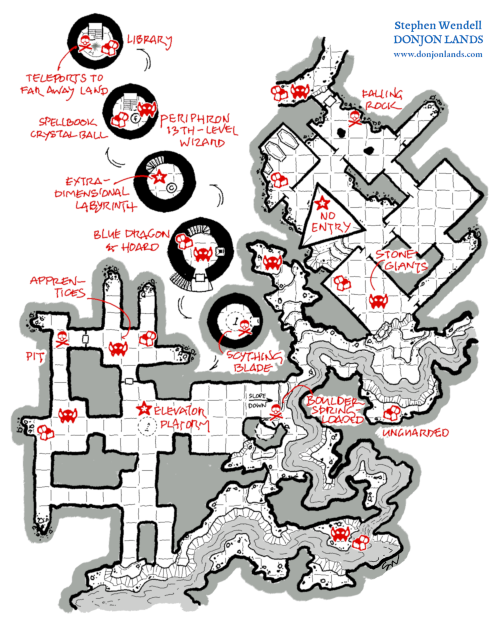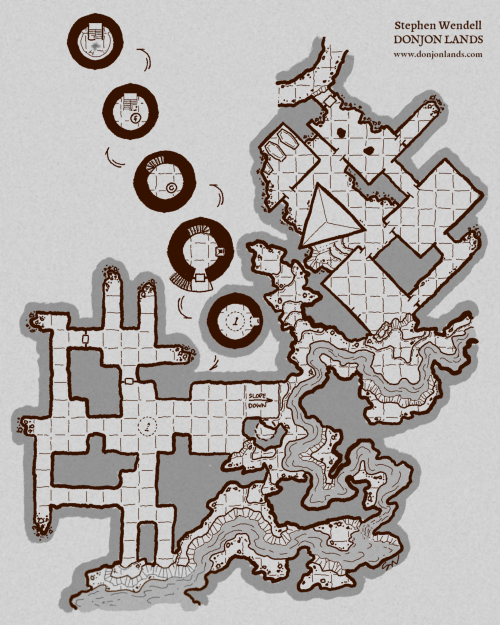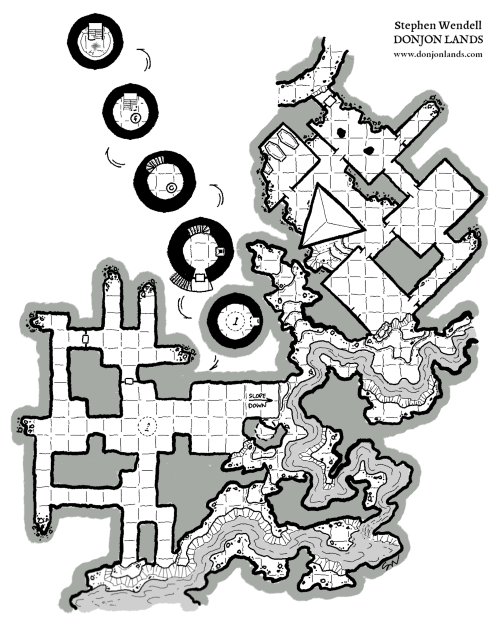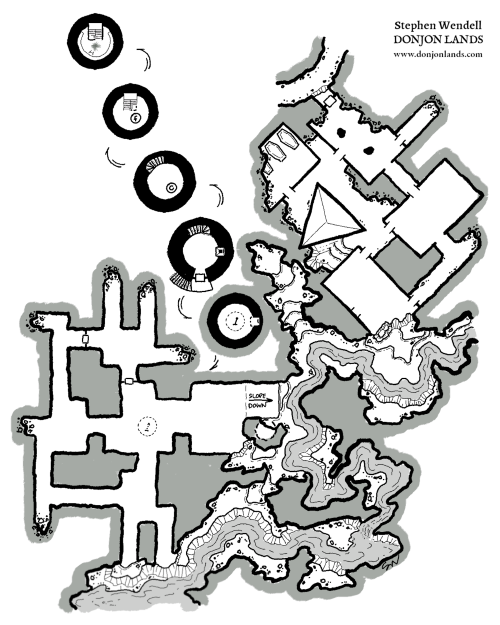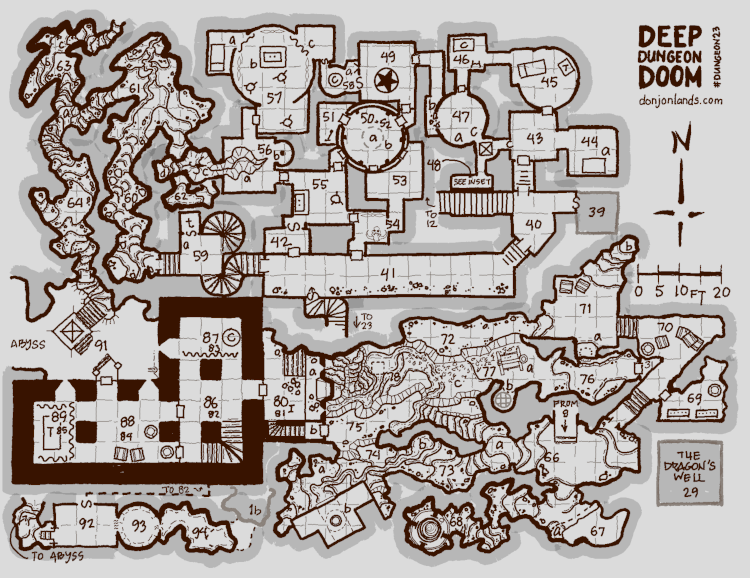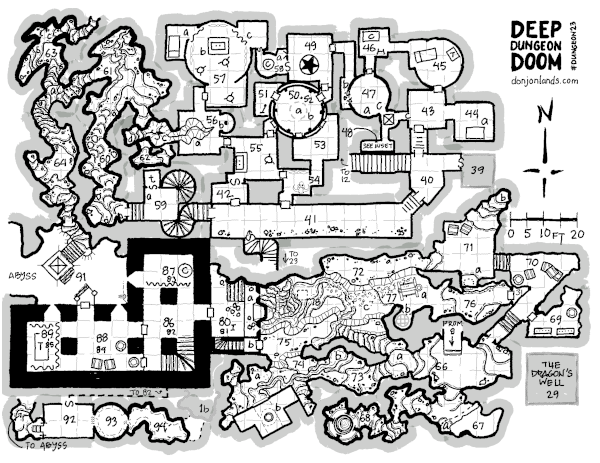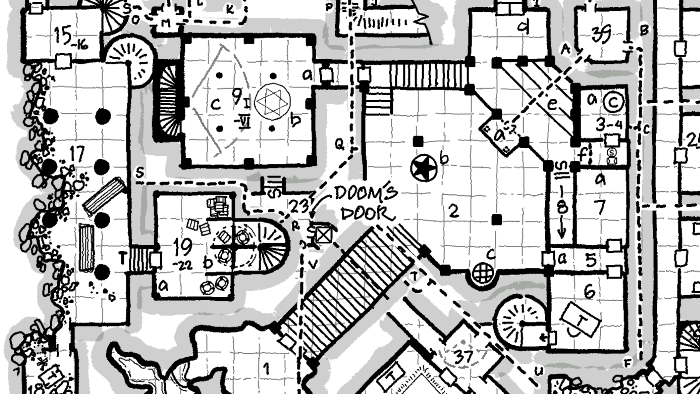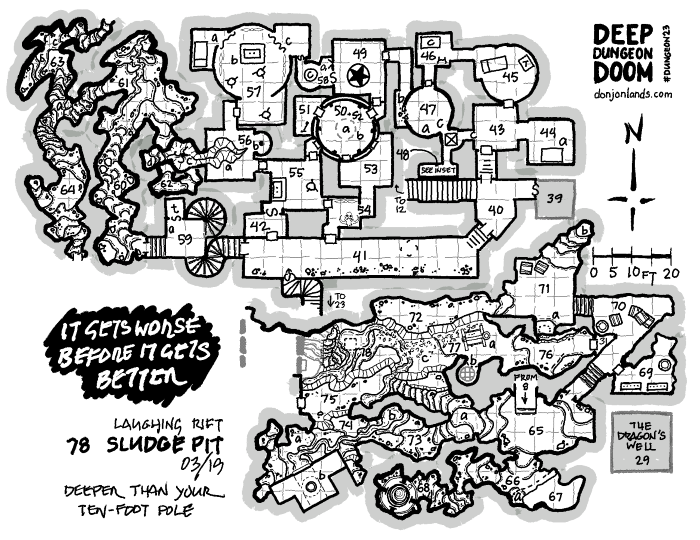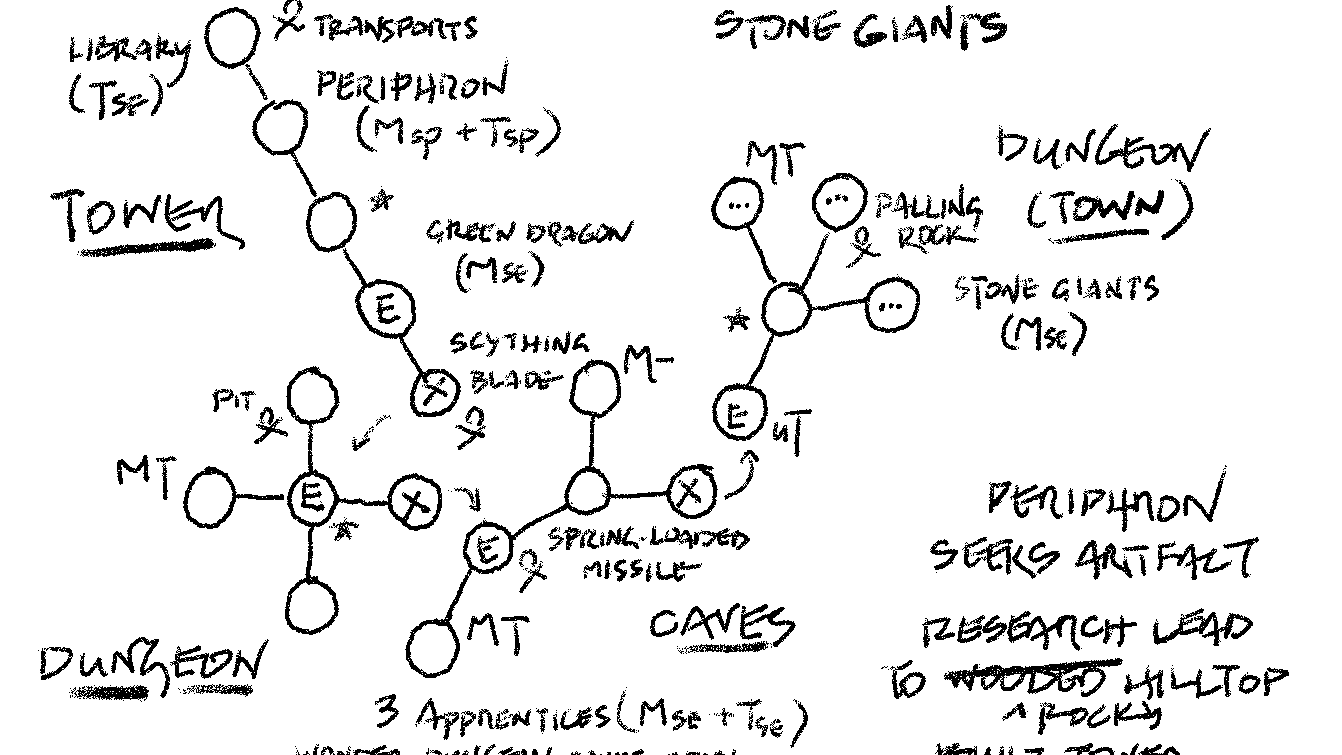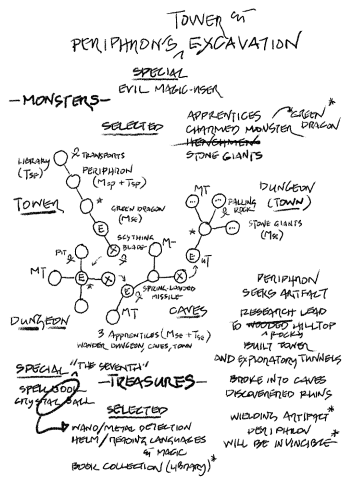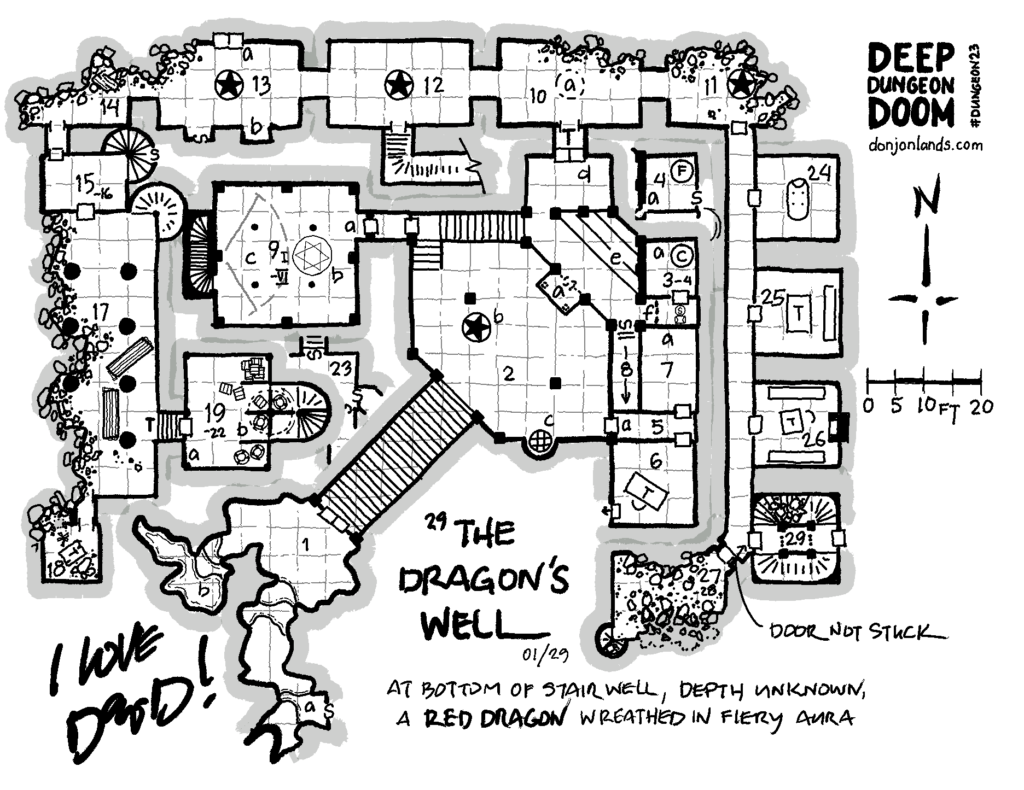The Panaggelon, Castle and Dungeon: Building Castles and Dungeons
The following article was published in L’avant garde #60. In addition to general guidance about how a DM might handle the process, I get from the article two house rules: Upkeep and Building Castles and Dungeons. The latter comprises Phenster’s sections on Construction Costs, Construction Time, and Engineers.
Both of these I put in the [C] Campaign category. While they might go in [E] Extra, most groups I think didn’t so much bother with building castles in the 1980s. And they still don’t. The lure of the dungeon is too great.
This is the last of Phenster’s articles from issues of L’avant garde in the Postlethwaite Collection.
The Panaggelon, Castle and Dungeon
We've been playing pretty steady in the GREAT HALLS OF PANDEMONIUM almost since the beginning. Hazard started the campaign way back in 1980. I remember it was wintertime, because we rolled characters and first went into the dungeon on a snow day. It was a Friday, and we played D&D all weekend long.
We've had a LOT of adventures in 4 years, and we found a LOT of treasure too. We had sacks full of gems and jewelry and thousands and thousands of gold pieces in the bank. Friar Tombs decorated his room at the Nine of Pentacles with tapestries, upholstered furniture, and a silver service. All that was after he gave his tithe to the Church. Jinx hired a butler. Beowulf keeps a minstrel on retainer to record our exploits and make up songs about us--mostly about Beowulf fighting monsters. We're getting high up in level too, which means we pay quite a lot for upkeep. Upkeep is only 1% of XP in GP every month, but 1% of a lot is still a LOT!
We added up all our treasure. We have 8 regular players and 11 more that are active but less steady. Between us we had almost 3 million g.p. in the fortress bank. The castellan said we could just buy the fortress if we wanted to. We could stay there for free, and he could retire to a nice beach on the south coast.
That gave us the idea to build our own stronghold. We had to go to Lundgre Towers and get an audience with the king to ask him for a land grant. We asked King Vortigen for some land near the Great Halls so we could get to the dungeon quickly. We all had to swear fealty to Vortigen and promise to protect the borderlands and the king's subjects and make sure nothing comes out of the Great Halls that would threaten the kingdom. He granted us some land and gave us the deed.
Hazard said our land was mostly flat with some forests and swamps and a few hills. He gave us a contour map of the hills, and we picked out a nice place on the highest hill to build our castle. It looked plenty big enough, and the sides were steep.
So one day we sat down to design our castle. We didn't know much about making a castle map. Cypher checked out a book about medieval castles from the library. It had some castle plans in it to give us some ideas. I got a pack of 11" x 17" graph paper from the Game Hoard. 5 squares to the inch because we wanted to make a BIG castle.
First, we started with a list of all the things we wanted to put in it. There had to be a keep, of course. That's where the castle lord would live. We decided Beowulf should be the lord, because he's our best fighter. There are also chambers for all the PCs in the keep, plus the barracks for a contingent of guards.
Tombs wanted a cathedral. Hazard said a cathedral would be too big, but a church would fit into a castle. But Tombs said he was going to be a patriarch eventually, and patriarchs need a cathedral. After some haggling, they settled on a small cathedral, and we got to build it for half price due to divine intervention.
Jinx wanted the top floor of a corner tower for the offices of the thieves' guild. But Mandykin said the thieves' guild should be super secret. They would run a clandestine operation out of anywhere and everywhere in the castle. Tombs said to keep it out his cathedral, and Beowulf said to keep it out the keep.
Cypher and I each wanted a tower for our magic-users, because magic-users live in towers. For her character, Mithrellas, Cypher wanted a tower in a garden with trees and plants with flowers. So we decided our castle would have a greensward. I wanted my tower to be outside the main castle, and you have to get there by craggy stairs. I wanted it higher up, so Phenster Prime would have a good view all around for scrying on the enemy. Hazard let me change the map a little. He added a high craggy hill beside our castle's hill. It's on the southeast side, which is in the direction of the Great Halls.
We knew that castles were usually divided into baileys. One side of our hill was higher than the other, so we decided on an upper bailey and a lower bailey. All the people that work in the castle live in the lower bailey, so it has apartments and an inn and tavern, plus shops and stables, a blacksmith and a money changer where we can change our coins when we return from our adventures. The upper bailey has the keep and barracks and stables for the castle guard. We have a gatehouse coming into the lower bailey and an inner gatehouse between the lower and upper baileys.
Our first draft took up the whole 11" x 17" sheet. Hazard called it a sprawling monstrosity and said not even 3 million was enough to build it. So we redrew it smaller. In fact, we drew and redrew several times before we got it to something we all liked.
Beowulf drew a dungeon he wanted to build under the castle. He said we could keep monsters in it, and it would be fun to go down on our days off and fight some monsters. The rest of the group didn't argue. There's nothing to do when Beowulf wants to fight monsters.
Finally, our castle plan was all ready and Hazard approved it. Then he figured up how much it would cost: 3 million g.p. for just the castle by itself. That's exactly what we had, so we decided Beowulf's dungeon would have to wait. Then Hazard said we have to hire engineers to lead the work and make sure our castle doesn't fall down. We need 30 engineers. They get paid 750 g.p./month. That sounded like a reasonable salary. Then Hazard said it's going to take 10 YEARS to build! That makes 2,700,000 g.p. for the engineers. That's almost 6 MILLION for our castle!
We haggled for a long time, but Hazard wouldn't budge. He said it's a big castle and it's going to be amazing when it's finished. But all that amazement costs money and time. So, we decided that we would go ahead and start the construction. We've only been adventuring for a couple game years and we already had 3 million. We'll find more treasure as we build.
For the name, we came up with the Panaggelon, which means "All Angels." We aren't really so angelic, especially when we play D&D. But we do fight demons in the Great Halls, we are polite with our hosts wherever we play, and we don't swear as much as we used to.
As soon as they started digging the foundation, of course, the excavators uncovered a buried tunnel that leads deep beneath the mound. We don't know what's down there, but it's certainly something terrible and vile that we'll have to deal with sooner or later. Might as well be sooner, because now we need more treasure.
CONSTRUCTION COSTS
This is Hazard's price list for building castles and dungeons. Towers can be up to 3 times as high as their width. Just double the cost. They can be even higher than that if they are supported by a wall or some other structure.
For castles, add 20% for all the accoutrements, like doors, stairs, columns, daises, secret doors, and so on. This includes special stuff, like arrow slits and murder holes, bars in the windows, a few stone stairways, the occasional trap door, plus iron doors, and even some secret doors "as long as you don't go nuts"—Hazard's words. But it doesn't include monsters, traps, or special effects, which is up to the DM on a case by case basis.
You can build an entire dungeon out of 10' cubes. Just draw your dungeon, then count the cubes, taking the ceiling heights into consideration. Round 5' cubes down to 0, but count a half a 10' cube as 1 cube. In dungeons, add 33% for accoutrements (q.v.).
Curtain Wall: 100' x 30', 5,000 g.p.
Moat: 100' x 20' x 10', 500 g.p.
Gatehouse: 30' x 20' x 20', 5,000 g.p.
Portcullis: 1,500 g.p.
Drawbridge: 1,500 g.p.
Barbican:
2 ea. 20' x 30' towers, plus gatehouse, portcullis, drawbridge
15,000 + 15,000 + 5,000 + 1,500 + 1,500 = 39,000 g.p.
Round Towers:
20' x 30', 15,000 g.p.
30' x 45', 30,000 g.p.
Square Towers:
20' x 30', 12,000 g.p.
30' x 45', 24,000 g.p.
Bastion: 30' x 30', 9,000 g.p.
Round Keep: 60' x 90', 100,000 g.p.
Square Keep: 60' x 90', 75,000 g.p.
Round Great Keep
Curtain wall with gate: 100' x 40', 42,000 + 3,000 g.p.
Inner keep: 50' x 80', 42,000 g.p.
Square Great Keep
Curtain wall with gate: 100' x 40', 54,000 + 3,000 g.p.
Inner keep: 50' x 80', 54,000 g.p.
Well: 500 g.p.
Cistern: 1,000 g.p.
Fountain: 1,500 g.p.
Buildings
Stone Walls: 100' x 15', 1,500 g.p.
Wood Walls: 100' x 15', 750 g.p.
Dungeons
Corridors and Rooms: 10' x 10' x 10', 500 g.p.
CONSTRUCTION TIME
You have to take game time to build a castle. Count 1 day for every 1,000 g.p. of the construction cost.
ENGINEERS
You need an engineer to make sure the castle will stay standing. They cost 750 g.p. per month, and you need 1 engineer for every 100,000 g.p. of the construction cost.
KEYS TO THE CASTLE
The map scale is 10' per square. The contour lines are 20' apart. The thick lines are stone walls with battlements. The thin lines are wooden buildings with sloping, shingled roofs. The secret door to Phenster's tower has a WIZARD LOCK on it, an EXPLOSIVE RUNES trap, and an INVISIBLE STALKER stands guard outside.
1. Dry moat and drawbridge
2. Gatehouse with portcullis
3. The Gauntlet
4. Inner gate
5. Stables
6. Warehouse
7. Money changer
8. Blacksmith
9. Well
10. Cathedral of Light (Tombs)
11. Chapter house
12. Cloister
13. Armorer
14. Provisioner
15. Trader
16. Market Square
17. Apartments
18. Tavern
19. Inn
20. Guild house
21. Upscale apartments
22. Garden gate
23. North Greensward
24. Moon Tower (Mithrellas)
25. South Greensward
26. Inner gatehouse
27. Upper bailey
28. Cavalry stables
29. Courtyard
30. Keep
31. Adventurer's quarters
32. Barracks, mess hall, armory
33. Tower of Stars (Phenster)
—L’avant garde #60 (February 1984)
This is the 39th and final entry in a series of articles, which reedits house rules for Holmes Basic D&D from 40-year-old game club newsletters. Mentions of house rules are in bold text and followed by a [bracketed category designator].
For rules category descriptions and more about the newsletters, see “About the Reedition of Phenster’s.” For an index of articles, see Coming Up in “Pandemonium Society House Rules.”
Phenster’s Pandemonium Society House Rules is a work of fiction. Names, characters, businesses, events, incidents, and newsletters are either products of the author’s imagination or are used in a fictitious manner. Any resemblance to actual persons, living or dead, or actual events is pure coincidence.

The 1977 edition of Gygax and Arneson’s DUNGEONS & DRAGONS is also known as “Holmes Basic” after editor Dr. J. Eric Holmes.
